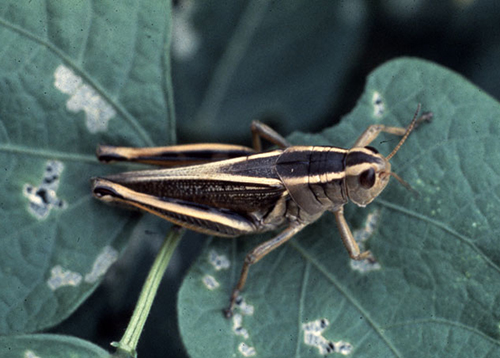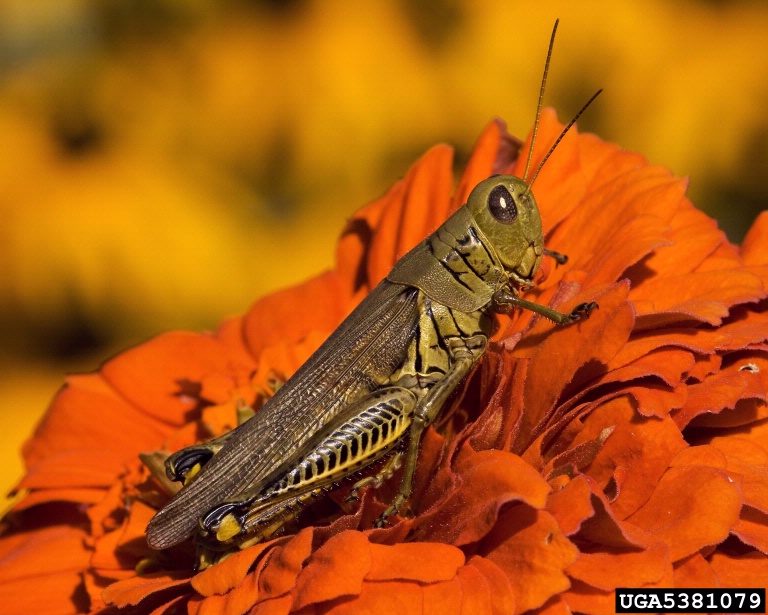Integrated Pest Management
Grasshoppers
Pest Description
- adults: ~ 1/8 – 1 1/2 inches; brown to green
- nymphs: look like adults without fully developed wings
- well-developed rear legs for jumping
- there are many species of grasshoppers in Utah
Host Plants, Diet & Damage
- feed on many different ornamental plants, grasses, vegetables, forage and crops
- cause chewing damage on leaves: skeletonizing, small to large holes and marginal feeding
- chew primarily on leaves, stems and seedpods
Biology, Life Cycle & Damaging Life Stage
- overwinter as eggs (in egg pods) in the soil
- eggs hatch in spring or early summer
- development takes about 1 1/2 – 2 months
- one (most) or more generations per year
- nymphs and adults are the damaging stages
IPM Recommendations
- Damage from small populations can be tolerated.
- Exclude grasshoppers from plants using fine mesh material (row covers).
- Pesticide-based management should occur on a larger scale (e.g., a neighborhood) rather than on an individual property.
- Use insecticide baits containing Nosema locustae or wheat bran + carbaryl.
- Apply an insecticide (carbamate; pyrethroid) to protect specific plants.
For more information, see our Grasshoppers fact sheet or our Community-Wide Grasshopper Control fact sheet.




